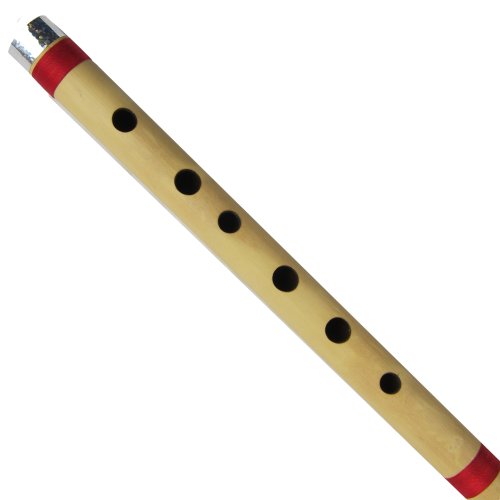All Categories





Shalinindia Bamboo Flute Bansuri Indian Music Instrument Transverse Type
Share Tweet
*Price and Stocks may change without prior notice
*Packaging of actual item may differ from photo shown
- Electrical items MAY be 110 volts.
- 7 Day Return Policy
- All products are genuine and original
- Cash On Delivery/Cash Upon Pickup Available








Shalinindia Bamboo Flute Bansuri Indian Music Features
-
Made with single piece of bamboo.
-
North Indian transverse flute.
-
Six finger holes.
-
Length – 17 inches.
-
Crafted by music instrument artisans of Bareilli in north India.
-
Trim color may vary.
About Shalinindia Bamboo Flute Bansuri Indian Music
The bansuri is made from a single hollow shaft of bamboo with six or seven finger holes. An ancient musical instrument associated with cowherds and the pastoral tradition, it is intimately linked to the love story of Krishna and Radha, and is depicted in Buddhist paintings from around 100 AD. Bansuris range in size from less than 12" to nearly 40". There are two varieties of bansuri: transverse, and fipple. The fipple flute is usually played in folk music and is held at the lips like a whistle. Because it enables superior control, variations and embellishments, the transverse variety is preferred in Indian classical music. The sound of a bansuri is generated from resonance of the air column inside it. The length of this column is varied by closing or leaving open, a varying number of holes. Half-holing is employed to play flat or minor notes. The size of a Bansuri affects its pitch. Longer bansuris with a larger bore have a lower pitch and the slimmer and shorter ones sound higher. In order to play the diatonic scale on a bansuri, one needs to find where the notes lie. For example, in a bansuri where Sa or the tonic is always played by closing the first three holes, is equivalent to D, one can play sheet music by creating a finger notation that corresponds to different notes.



















